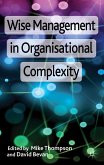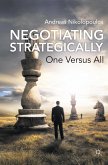When the organisation is seen as a system, what is being optimized for the organisational system to be viable? Starting from this seemingly naïve question, this book is unique, both academically and practically. First, it analyses and presents organisational changes within a unified framework of phase transition. Drawing upon a rich pool of diverse disciplines such as physics, material sciences, biology, geography, philosophy of science, and theories of organisation and management, organisational change is conceived as a process of optimizing or achieving efficiency in allocation of information-processing load within the system. A resulting model of alternating phases of evolutions and revolutions as required by the interaction between the organisation's internal and external conditions is dogma-free in that the change by itself is no better nor more desirable than the stable state. Second, as the book's model not only describes the mechanism of the organisational phase transition between evolutions and revolutions but also predicts when those switches are likely, from its discussion a comprehensive guideline for organisational management is derived, encompassing both phases of the organisational evolution and revolution. Third, based on the unified model of organisational change, a new role of leadership is presented in the context of the organisation as an artificial system. Here, the ideal leader is not simply a guardian of the established, stable state nor is it an initiator of constant changes but, rather, is a steward or pastor who identifies the need for phase switch based on observation. The leader then facilitates the switching process between the organisational evolution and revolution as required, moving the organisation towards optimal viability. Combining rigorous theoretical reasoning with practical insights, this book is an ideal companion for both researchers and practitioners of organisational management in today's rapidly changing world.








